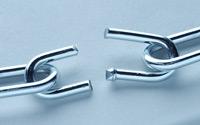
I am amazed
that we don’t hear more grumbling about one of the least consumer-friendly aspects of wireless life -- the home WiFi network. It is beyond me how most ordinary non-geeky beings out there manage
a set of router technologies and protocols that to this day are a challenge to set up and deliver uneven performance and unexplained breakdowns. I have been testing and using home networks since the
days of proprietary hardware that hadn’t even heard of an 802.11x standard. I have set up and troubleshot them all. Even I find myself scratching my head over incomplete connections, missing
SSIDs, weird performance drops from the highest-speed protocols, etc.
I wonder how people who don’t have my experience with the stuff handle these inevitable hiccups in everyday home
connectivity. In the end we are all in the same boat, and probably rely on the default solution. When all else fails, reboot the router. I don’t know why it often works or how. It is the modern
connected world’s rough equivalent to banging the TV to get better reception. It must rattle something in there into place.
I am enthused but never fully satisfied when each new
generation of protocol and hardware hits the market. I have a recent issue Netgear R6300 router that has all the latest bells and whistles. There are dual bands running at insanely high Mbps speeds,
designed for a dozen or more connected devices, and USB ports for adding storage. It even has downloadable smartphone apps for controlling the network.
It also sports the latest and greatest
802.11ac protocol that employs “beamforming” that actually helps the router locate an “AC” compatible device in an environment to optimize the direction the signal is aimed.
This is intended to optimize the signal to concentrate it at and track the receiver.
Even without the beamforming capability (which requires compatible receivers) I was impressed by the bump
in speed under the new hardware that apparently has very strong signal power. I compared performance around my home/office network across both frequency bands on a three-year-old 802.11n and the new
router and found tremendous gains. We are finally at the point where a router in an upper floor can reliably stream high-definition video with nary a hiccup to iPads, connected TVs, etc. In fact, both
iOS AirPlay and Google Chromecast -- which rely heavily on WiFi performance -- were substantially faster. And the mobile app allowed for easy and more user-friendly access to tweaking tools.
But we are not there yet. At the upper end, on the 5.6G-hz band that is supposed to provide the best performance for 802.11n and 802.11ac protocols, I find throughput is all over the map. This is
as true with the latest Netgear router as it was for me with an aging model. This band, which is best for streaming media without interference from ordinary appliances, pops up and down the
performance charts and is the most likely place for a total flake-out.
Overall, the situation is getting better. I have some hope for the beamforming technology to optimize and normalize
signals, but this technology only works with other AC devices. The next generation of iOS devices and Apple TVs will likely support the technology, as the newest MacAirs do. But in my experience with
devices like OTT boxes, Android phones and tablets and game consoles, their ability to connect to routers even on the 5.6GHz band is haphazard.
Ironically, both out in the wild and in my own
home, I find myself reverting to my iPhone’s LTE or a portable LTE hotspot for device connectivity that usually beats the available WiFi.